- Home
- slideshows
- miscellaneous
- Crowds, costs, and corpses: 16 misconceptions about what it's like to climb Everest
Crowds, costs, and corpses: 16 misconceptions about what it's like to climb Everest
Climbing Everest isn't cheap. People who attempt to summit spend between $25,000 and $65,000 to hire Sherpa teams to carry loads up the mountain, pay for food and climbing gear, and buy the required permits to stay at Base Camp and climb the mountain.

Attempting to Everest comes with myriad health risks. The mountain's fatality rate was about 4% as of 2012.
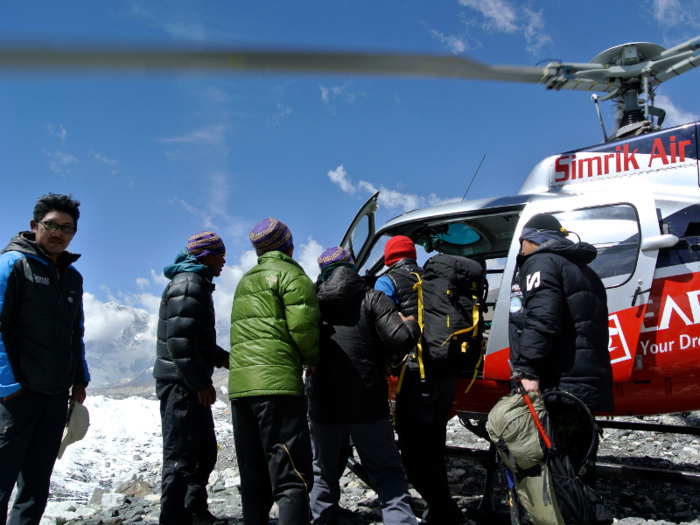
Source: Business Insider
That's just one-eighth as risky as trying to summit the nearby Annapurna.
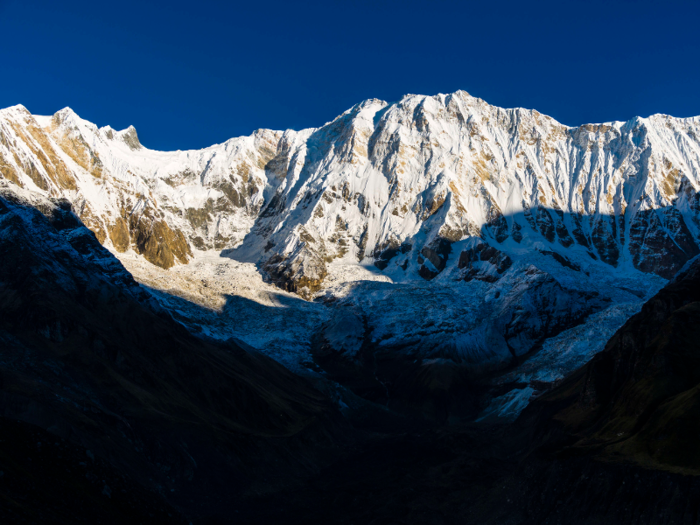
According to NASA's Earth Observatory, Annapurna I — the 10th tallest mountain in the world — has a fatality rate of 32%.
Before attempting to reach the summit, climbers typically spend one to two months at Everest Base Camp, which is higher than nearly every mountain in Europe at 17,600 feet. They make multiple trips up and down the mountain to acclimatize.
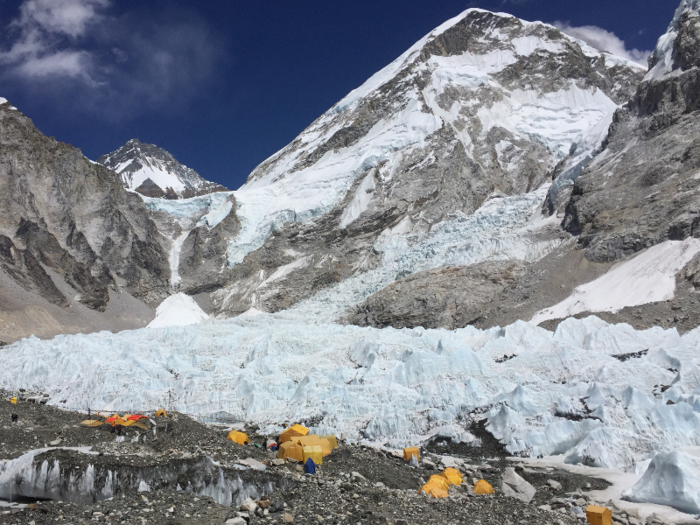
If climbers don't give their bodies enough time to acclimate to the lung-crushing conditions in the Himalayas before attempting to summit, they could experience swelling in their brain and lungs.
Expeditions generally make at least three trips up the mountain from Base Camp, going a few thousand feet higher with each successive trip before making a push for the top.
One woman, however, recently completed her entire Everest journey — including the flight from California to Nepal, the 40-mile trek from the airport to Base Camp, and her climb up the mountain — in just two weeks, the Washington Post reported.
To get to Everest's Base Camp, climbers have to fly from Kathmandu to the tiny airport of Lukla, then trek 40 miles.
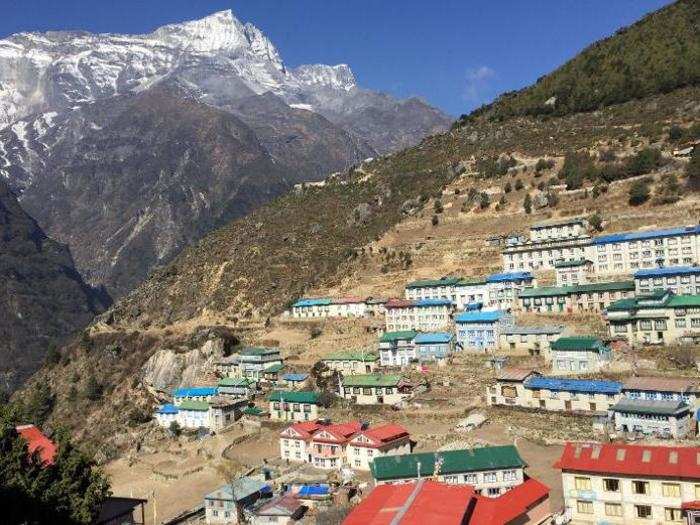
This trek often takes two weeks, giving climbers time to acclimatize to the high altitudes of the Himalayas. People often pass through Namche Bazaar, a mountain village, to stock up on supplies.
Climbers can't scale Everest at any time of the year. Typically May is the only month when the weather is good enough to reach the summit.
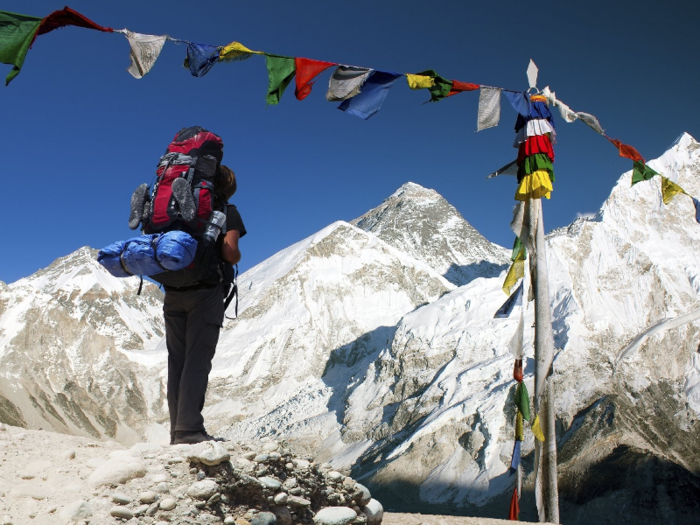
Good weather conditions — free of extreme snow, rain, and windstorms — are rare on Everest. An impending "weather window" often prompts a crowded scramble to the summit.
Short windows of good weather can cause traffic jams and overcrowding on the mountain route. Last week, 11 people died waiting to ascend and descend the peak during this season's good-weather window.
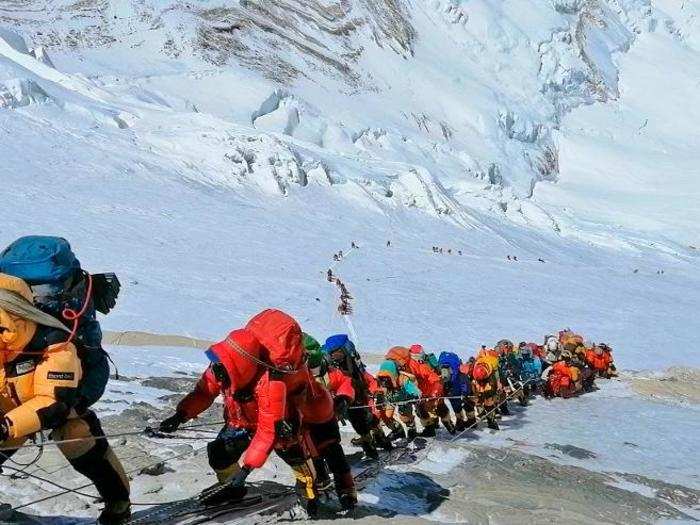
Not everyone who wants to climb Everest in a given year can do so. Nepal only issues a set number of permits per year. A record 381 people were granted permits to climb Everest in 2019, and the recent deaths have given rise to new scrutiny of the permitting policies, according to The Washington Post. But overcrowding on the summit has been a consistent issue on Everest, since parts of the route necessitate single-file climbing.
The typical route up Everest comes up from the mountain's south side in Nepal. But there there are other routes to the top, including a northern one from the mountain's Tibet side.
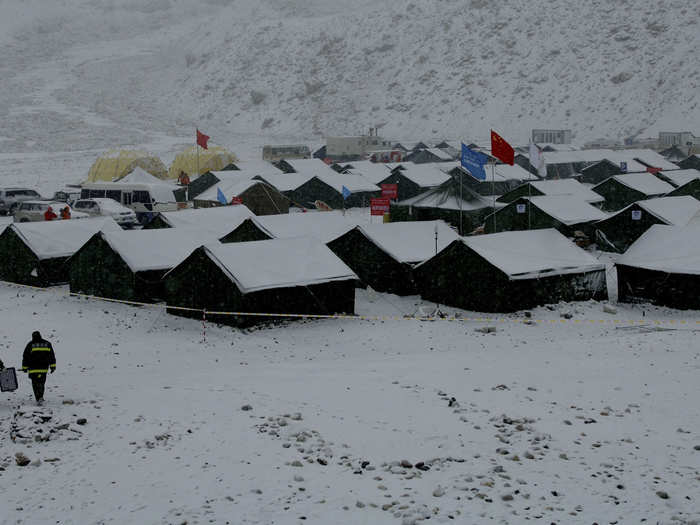
Typically, the north route has less traffic jams due to having fewer climbers. That route also has its own base camp, which is far less busy and built-up than its southern counterpart.
But most climbers prefer the southern route because the climbing isn't as technically challenging.
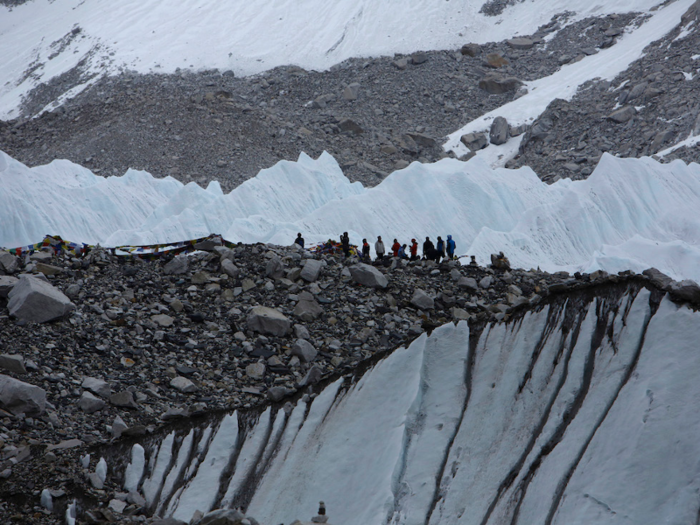
The route is mostly a long, slow, oxygen-starved ascent.
The current Everest-climbing record holder, Kami Rita Sherpa, has been up to the summit 24 times and plans to make it an even 25 next year.
One of the secrets behind Kami Rita Sherpa's success is that local Nepali and Tibetan people don't experience the same health consequences at high altitudes as most people do. That's thanks to a unique aspect of their genetic code.
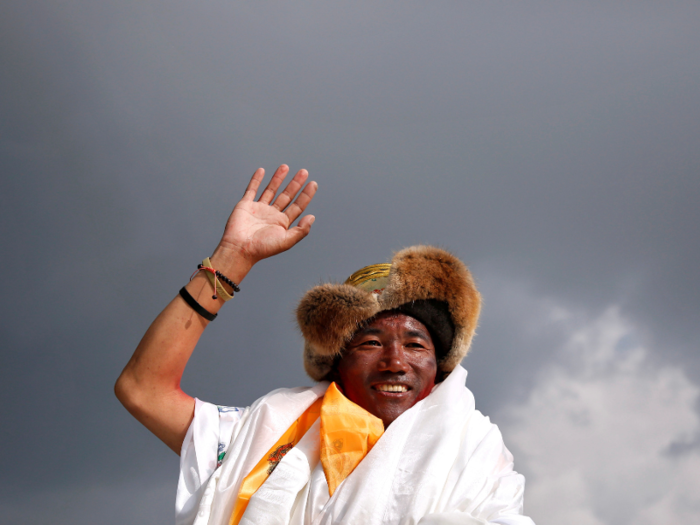
When most humans reach high altitudes — where oxygen levels are lower — our bodies make more hemoglobin (the protein in red blood cells that helps carry oxygen from the lungs to the rest of the body). But too much hemoglobin can make it harder for the heart to pump blood around the body. That can lead to mountain sickness and heart attacks.
Many Tibetans don't experience this issue because their bodies don't make that extra hemoglobin. Instead, their DNA contains a gene called EPAS1, which prevents that blood-thickening process. That gene, it turns out, comes from our human ancestor cousins, the Denisovans.
In order to combat the lack of oxygen at Everest's high altitudes, many climbers use supplementary oxygen, which they carry in tanks on their backs.
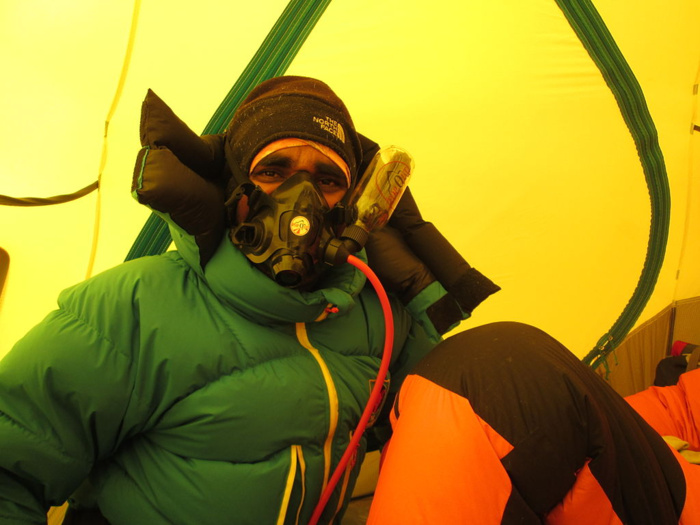
But not all mountaineers use supplementary "O" to climb. Some record-breakers make it to the top without supplementary oxygen. The first people to achieve that feat were Reinhold Messner and Peter Habeler on May 8, 1978.
Ropes up the mountain aren't in place year-round, so the first climbers to reach those heights have the job of anchoring the equipment and setting up the path for themselves and the climbers behind them.
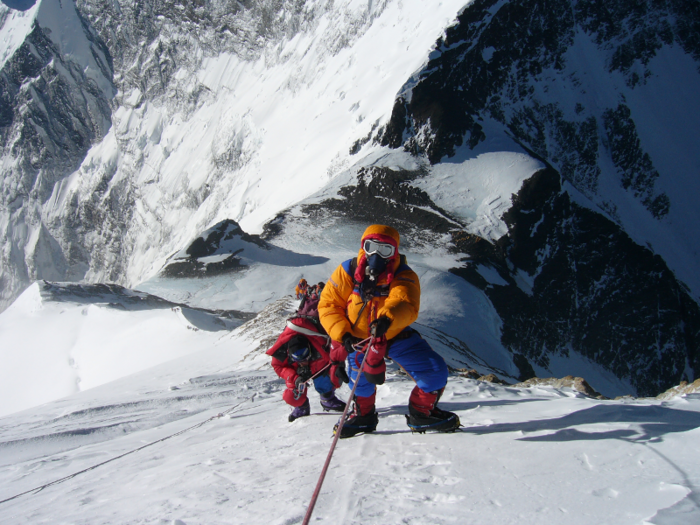
Mountaineer Shaunna Burke and her Sherpa team were the first to summit during the 2005 climbing season.
That meant Burke's team had to break the trail up — setting ropes, lines, and routes for themselves and the climbers behind them. "It meant we were moving so slowly that our hands and feet start to freeze," she said.
Everest's southern route has designated sites where climbers are allowed to make camp. They can't just pitch a tent anywhere.
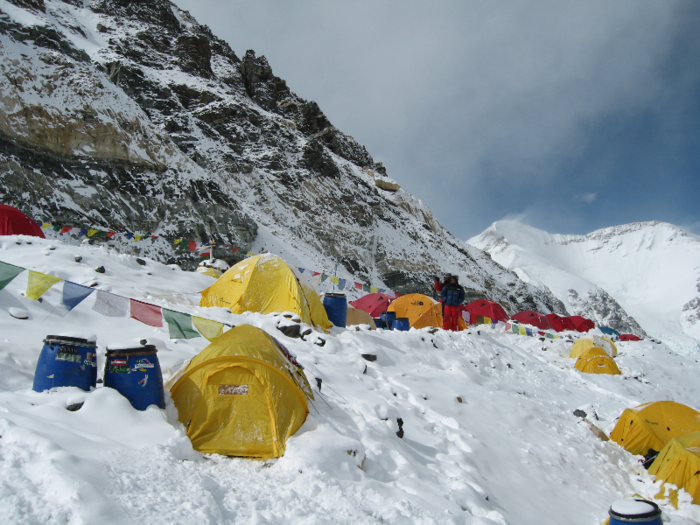
Climbers leave from Base Camp at 17,600 feet, then trek through the Khumbu Icefall up to Camp 1 at about 19,500 feet. Then they pass through the area known as the Western CWM to get to Camp 2, around 21,000 feet up.
Camp 3 is another 2,500 feet up the Lhotse Face, and Camp 4 is on the Southern Col at 26,000 feet — the edge of the mountain's "death zone."
The summit is 2,500 feet above Camp 4. Summiting takes a single, almost 24-hour, day of climbing from the edge of the "death zone."
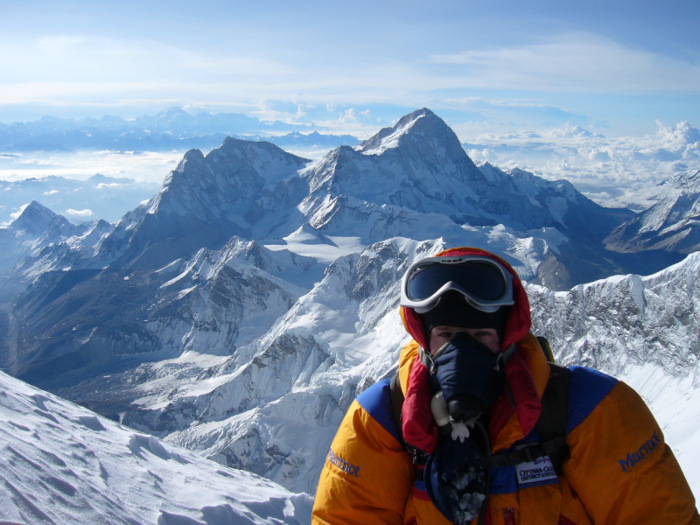
Typically, climbers attempting to reach the summit try to make it up and down in a single day, spending as little time as possible in the death zone.
Burke's summit attempt began around 11 p.m. at Camp 4, as she and her Sherpa team started ascending in total darkness.
"You almost felt like you could touch the sky," Burke told Business Insider. "It was a cloudless night, the stars were so bright, and all you could hear was breathing sound and see the headlamps of climbers in a line going up the mountain."
While the summit push may be the hardest day on the mountain, it's far from the scariest part of the route. Most people agree that's the Khumbu Icefall.
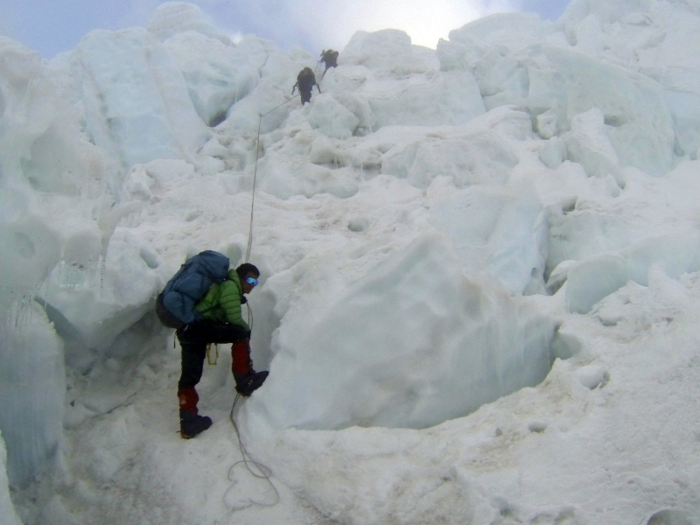
The Khumbu Icefall consists of layers of gigantic ice blocks that are constantly shifting, creating massive crevasses between them. Climbers use metal ladders to span these cracks.
Because the Icefall is located between Base Camp and Camp 1, climbers must pass through it every time they complete an acclimatization trip.
According to Burke, as temperatures warm, the Icefall becomes more unstable.
Between 1953 and 2016, there were 44 deaths in the Icefall — roughly 25% of the total deaths on the south side of the mountain during that time period. Climbers perished after falling into crevasses, having sections of the Icefall melt and collapse around them, or being smothered by avalanches.
In total, 306 people have died trying to summit Everest. Most of those dead bodies remain frozen on the mountain, since it's a dangerous and life-threatening task to retrieve them.
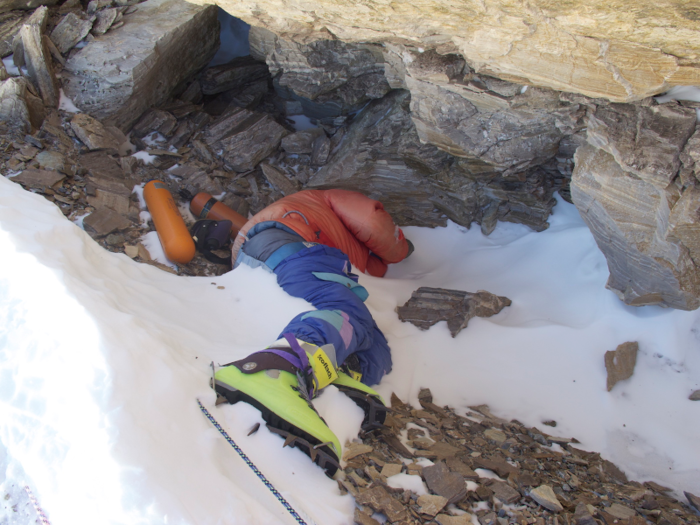
Most bodies are left on the mountain because removing them can cost tens of thousands of dollars (in some cases, around $70,000). The effort has proven fatal in the past: in 1984, two Nepalese climbers died trying to recover a body.
Lhakpa Sherpa, who is the women's record-holder for most Everest summits, previously told Business Insider that she saw seven dead bodies on her way to the top of the mountain in 2018.
"Only near the top," she said, noting that one man's body "looked alive because the wind was blowing his hair."
Popular Right Now
Popular Keywords
Advertisement